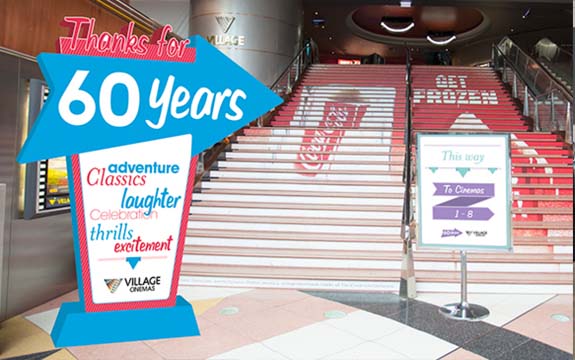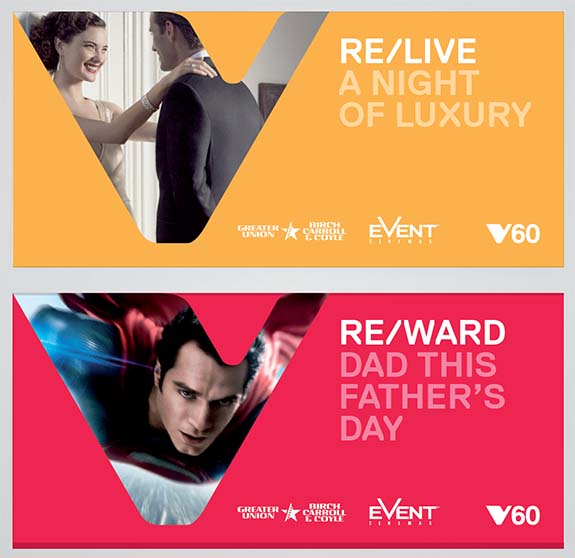Co-designing the future of cinema

In Summary
- Master of Design students continue work with Village Cinemas
- The close working relationship with Village started in 2013
Master of Design students continue their work with Village Cinemas this year, investigating the future of cinema entertainment using a co-design approach. Working with cinema end-users and the movie-loving general public, the focus is to create a co-design toolkit branded for Village.
After two years of co-design research into the future of cinema for Village, some research is being integrated in the Village customer experience.
“We are tapping into the reasons people don’t want to go to the cinema anymore and Village have taken some of our design proposals on-board,” says communication design Associate Professor, Simone Taffe.
“For example, one student designed a campaign featuring the idea that millions of romances and first dates have occurred at the cinema. Further research showed that this solution connects well with the general public.”
The students are researching bespoke cinema experiences for the younger generation. They are working with ideas around booking your own cinema room with a group of friends to relax and enjoy cinema in a private space.
“There are co-design ideas to brighten up cinema entry corridor spaces with projections; teaming up with dating sites to find a friend to go to the cinema with; collectable movie tickets and putting yourself in the ticket via a photo booth,” says Associate Professor Taffe.
“Our work with Village Cinemas is an example of one of our ongoing relationships with industry to provide learning opportunities for students,” she adds.
Co-design is a growing area in innovation-led design that enables the creation of appropriate and effective solutions in giving many stakeholders a strong voice and involvement in the design process.
It aims to include end-users in the design process to capture their ideas and contextual knowledge, stressing the right for end-users to influence the design of things that affect them.
“Co-design is designing with end-users, whereas user-centred design assumes that research and design work can be done on behalf of end-users. Historically designers have often worked intuitively proposing solutions based on observation,” explains Associate Professor Taffe.
The aim of co-designing with end-users is to harness the creativity of everyday people who are often non-designers. Co-designing with end-users promises more marketable products that suit actual end-users’ needs and preferences.
This year ten Master of Design students are continuing research into ideas for social spaces connected to cinema. Last year the research focus was the world of fan art posters, specifically the future of the movie lover poster.
In 2016, interior projections for the cinema foyer and entry pathways were developed to guide visitors to the cinema. Taking cinema technologies outside the formal cinema environment to the outer spaces of Village complexes, as an immersive experience for cinema-lovers.
The close working relationship with Village started in 2013, with an honours student class of 23 students. Students designed the 60th Anniversary Brand for Village. The design campaign was displayed across Australia with media coverage about the design collaboration.
In 2015, Master of Design students joined forces with Swinburne software engineering students to design a phone game called Nom Nom, in partnership with Hive Creative.

Nom Nom game visuals designed in partnership with Hive Creative
The game enhances the overall cinema experience from the moment a movie-goer enters a Village Cinema providing families with entertainment on their phones when queuing for tickets, while winners can receive free popcorn.
“We were surprised by the outstanding quality of the students’ ideas. We saw the students grow in confidence with their presentation skills and their ability to communicate a good idea,” reflects Mohit Bhargava, General Manager Sales and Marketing, Village Cinemas.

Village Cinema screen promotions

